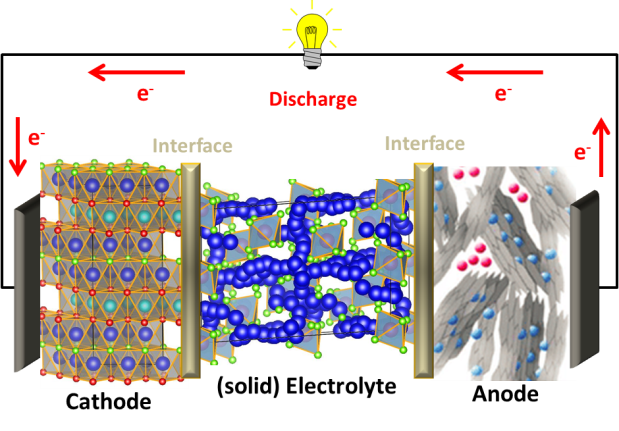Electrochemical Energy Storage
To meet the demands for efficient and sustainable energy storage, future battery technologies need design strategies that are based on an atomistic understanding of the underlying materials. By applying quantum chemistry and density functional theory, we investigate the processes occurring at the anode, cathode, and electrolyte of Li- and post-Li ion batteries. Our research is part of the Cluster of Excellence for new battery technologies (POLiS), which offers a unique joint opportunity in research and education.
Solid state battery

For the effective functioning of a battery, anode, cathode and electrolyte need to exhibit various properties such as high capacity, high energy density, and good ionic conductivity. By applying quantum chemistry and density functional theory, but also molecular dynamics and Monte Carlo methods, we aim to gain insights into the processes occurring in and at the different components of Li- and post-Li ion batteries.
Selected publications
- Ion mobility in crystalline battery materials, Adv. Energy Mater. 14, 2302550 (2024), Open Access, DOI: 10.1002/aenm.202302550
- Computational Screening of Oxide Perovskites as Insertion-Type Cathode Material, Adv. Energy Sustainability Res. 5, 2300204 (2024), Open Access, DOI: 10.1002/aesr.202300204
- Combined study of phase transitions in the P2-type NaXNi1/3Mn2/3O2 cathode material: experimental, ab-initio and multiphase-field results, npj Comput. Mater. 10, 75 (2024), Open Access, DOI: 10.1038/s41524-024-01258-x
- Reactive Interactions between the Ionic Liquid BMP-TFSI and a Na Surface, Batteries Supercaps 6, e202300336 (2023), Open Access, DOI 10.1002/batt.202300336
- Descriptor and scaling relations for ion mobility in crystalline solids, JACS Au 2, 463–471 (2022), Open Access, DOI: 10.1021/jacsau.1c00505




